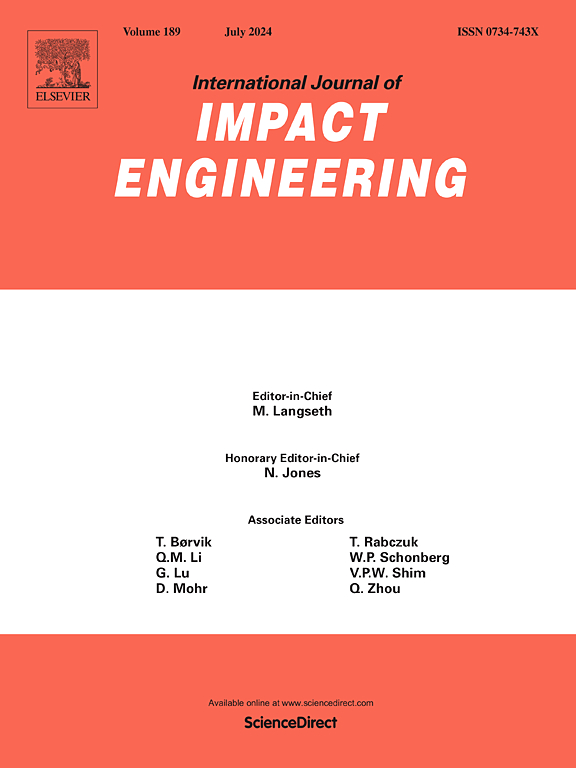Direct similarity method for thickness distorted elastic-plastic thin plates under impact loading
IF 5.1
2区 工程技术
Q1 ENGINEERING, MECHANICAL
International Journal of Impact Engineering
Pub Date : 2025-06-01
DOI:10.1016/j.ijimpeng.2025.105409
引用次数: 0
Abstract
In practical engineering, thin plates or stiffened plates with too small thicknesses due to machining technology limits may not be scaled accurately. Therefore, independent scaling of thickness can be considered. To overcome the shortcoming of the traditional dimension systems that use a single geometric scaling factor to relate the prototype and scaled models, the DLT- Lz dimension basis is proposed, which reflects the effect of thickness on the similarity law by introducing the dimension Lz, and the similarity framework of thickness distorted thin plates in the elastic-plastic phase is established. Afterwards, we propose the loss function method based on the DLT- Lz basis to obtain optimal scaling factors directly. In order to verify the validity of the method, numerical simulations are carried out on the distorted circular thin plate and stiffened plate. With the responses of distorted models inverted by the proposed similarity law, for the circular thin plate under impulses, the displacement, stress and strain responses show good consistency with those of the prototype in the spatial and temporal fields. For the stiffened plate impacted by a hammer, distorted models are equally capable of predicting the responses of the prototype with high accuracy. The mechanism of the effect of stiffeners on temporal similarity is further revealed, and the applicability of the proposed method for thin-walled stiffened plates is demonstrated.
冲击载荷下厚度变形弹塑性薄板的直接相似法
在实际工程中,由于加工技术的限制,薄板或加筋板的厚度过小,可能无法准确地进行缩放。因此,可以考虑厚度的独立标度。针对传统尺寸系统使用单一几何比例因子将原型与比例模型联系起来的缺点,提出了DLT- Lz尺寸基,通过引入尺寸Lz来反映厚度对相似律的影响,建立了厚度变形薄板弹塑性阶段的相似框架。随后,我们提出了基于DLT- Lz基的损失函数法,直接获得最优标度因子。为了验证该方法的有效性,对变形圆形薄板和加筋圆形薄板进行了数值模拟。利用所提出的相似律反演变形模型的响应,对于脉冲作用下的圆形薄板,其位移、应力和应变响应在时空场上与原型具有较好的一致性。对于受锤击的加筋板,变形模型同样能够高精度地预测原型的响应。进一步揭示了加劲筋对时间相似性影响的机理,并验证了该方法对薄壁加劲板的适用性。
本文章由计算机程序翻译,如有差异,请以英文原文为准。
求助全文
约1分钟内获得全文
求助全文
来源期刊

International Journal of Impact Engineering
工程技术-工程:机械
CiteScore
8.70
自引率
13.70%
发文量
241
审稿时长
52 days
期刊介绍:
The International Journal of Impact Engineering, established in 1983 publishes original research findings related to the response of structures, components and materials subjected to impact, blast and high-rate loading. Areas relevant to the journal encompass the following general topics and those associated with them:
-Behaviour and failure of structures and materials under impact and blast loading
-Systems for protection and absorption of impact and blast loading
-Terminal ballistics
-Dynamic behaviour and failure of materials including plasticity and fracture
-Stress waves
-Structural crashworthiness
-High-rate mechanical and forming processes
-Impact, blast and high-rate loading/measurement techniques and their applications
 求助内容:
求助内容: 应助结果提醒方式:
应助结果提醒方式:


